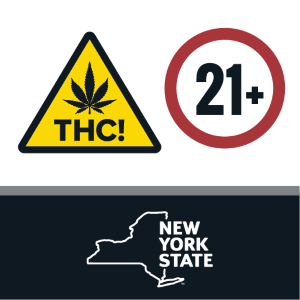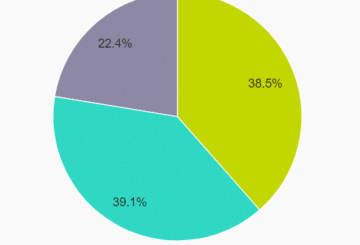From NewYorkUpstate.com, Published: Sep. 05, 2023, 7:48 a.m.
By Jeff Jones
Join NY Cannabis Insider for our next full-day conference on Sept. 21 at the Pearl Street Grill & Brewery in Buffalo. Tickets will sell out.
This guest column is from Jeff Jones, an AUCC based in the heart of the Finger Lakes’ “Emerald Necklace” (more about Jeff at the bottom of this column). The views and opinions expressed in this article are those of the author, and do not necessarily reflect the views or positions of NY Cannabis Insider.
The cannabis powers that be in New York State – the governor, the legislature, the Cannabis Control Board (CCB), and the Office of Cannabis Management (OCM) – need a history lesson, with a side of Econ 101.
They are about to repeat the tragedy of California by handing large corporations the dual sabres of 1) supply and demand, and 2) cash flow is king. As a result, New York’s small business and social and economic equity outcomes will be severely muted. Prove me wrong.
The history lesson
- In California, the state had social and economic equity objectives and wanted to transition legacy enterprises to the adult-use market.
- California’s Prop 64 law contained a five-year moratorium on cultivation canopies larger than one acre. However, during the “proposed final regulations” phase, following an expensive lobbying effort by large cannabis corporations, a loophole emerged that violated the spirit of Prop 64: small license stacking.
- With this loophole, well-connected and well-financed companies conglomerated dozens of small licenses, in effect building cultivation canopies of 25+ acres. Meanwhile, most legacy producers were only able to produce between one-quarter and one acre each.
The Econ 101 lesson
This loophole allowed the large “license-stacking” companies to do two things that overwhelmed all other factors in the marketplace:
1) They oversupplied the market. Santa Barbara County, the center of license-stacking, became the leading producer of cannabis in California. Humboldt County, the center of the nation’s legacy cannabis production for the preceding decades, was a distant second. Over the following years, wholesale prices crashed, and continue to be depressed to this day.
Sign up for the NY Cannabis Insider Newsletter
Enter your email address to get exclusive reporting on NY’s cannabis market delivered to your inbox:
2) They extracted cash from the marketplace faster than anyone else. These enterprises vertically integrated across production, distribution, and retail right from the start, and their Southern California greenhouses produced five crops a year. Meanwhile, legacy producers with small canopies could only produce one crop a year, and a complicated three-tier system forced them to work with distributors who rarely paid in-full or on time, with little accountability. These factors allowed large cannabis corporations to rake in cash year-round while smaller companies struggled to bring in revenues.
The resulting outcomes in California
By nearly any measure, California’s adult-use rollout has been of very limited success. Social equity programs are not supporting vibrant communities of entrepreneurs generating livelihoods and generational wealth. They are anemic and facing a long, slow road to their intended outcomes. Small farms with unicorn genetics containing rare cannabinoid profiles who are the poster children of the regenerative organic cannabis movement are not thriving and employing dozens of their community members. They are hanging on by a thread and doing all of the work themselves.
The marketplace has been so negatively affected by these basic economic principles that most businesses – large and small – are operating at break even or below break even levels. The amount of cannabis flower entering the commercial market has fallen nearly 40% in the last year to pre-2020 levels.
Back in New York
In the February 2023 New York Illicit Cannabis Market Absorption Analysis and the 2021 New York Cannabis Legalization Market Opportunity Analysis, both published by MPG Consulting, New York’s large cannabis corporations position themselves as the best solution for “illicit market absorption” (read: closing down legacy), supply chain stabilization (read: supply of indoor flower), jobs, and the tax revenues necessary to fund social and economic equity.
In these MPG analyses, a strategy is outlined for New York’s Registered Organizations (ROs) to capture over 77% of the market right out of the gate, and to increase their cultivation canopy to 250,000 square feet. This is equivalent to over 5.5 acres of production or, with five harvests per year, just under 30 acres of annualized production each.
Therefore, as in California, these corporations will have the ability to oversupply the state’s market and pull cash from the system faster than anyone else.
Corporations are not our friends
Corporations have at the heart of their DNA the duty to serve the needs of their shareholders above all other concerns, be these achieving social and economic equity, environmental sustainability and repair, or our children’s futures and livelihoods. Cannabis corporations are no different.
They have proven antagonistic to regulations that do not favor them. In New York, they lobbied to remove one of the few protections against their market dominance: the three-year moratorium on their vertically integrated storefronts. Several of these corporations have also enjoined or otherwise supported multiple lawsuits now hampering New York’s adult-use rollout.
They have also proven challenging to regulate. A June 13, 2023, MJBizDaily article describes a recent lawsuit that accuses California’s largest regulated producer, Glass House Brands, of being “one of the largest, if not the largest, black marketers of cannabis in the State of California, if not the country.”
Online cannabis communities have been discussing this activity as an open secret for over a year.
Finding a way forward
We can’t fault sharks for being sharks, and we likely can’t expect that the state will go back to the drawing board with the rollout, so what can we do?
Possible solutions:
1. We can ask the state to temper the ability of these corporations to decrease opportunities for others. A firm and low cap on their production, manufacturing, and distribution levels until the marketplace demonstrates a level of acceptable social and economic equity outcomes would be a step in the right direction.
2. We can ask the state to ensure that the ROs generate social and economic equity outcomes themselves. Currently there is a “shelf space” carve-out necessitating that the ROs carry inventory from other businesses in their vertically integrated shops. However, any producer – large or small – can currently satisfy this requirement. This shelf space should be reserved for social and economic equity licensees, small-tier producers, and microbusinesses.
3. We can ask the state to direct economic development funds and resources to stimulate cannabis small business development and not depend solely on the ROs to fund this critical work. State funds such as New York Forward and the Downtown Revitalization Initiative can support the buildout of small cannabis businesses on Main Streets across the state. The state’s small business development infrastructure, including business incubators, small business development centers, SUNY schools, and farmers’ markets, could all be deployed to help small cannabis businesses succeed.
In order for the state to achieve its social and economic equity goals, a critical mass of small businesses must exist in the marketplace. This is a unique economic development challenge.
However, If the state can learn from the mistakes of California, maintain balance in the ecosystem, and deploy its vast economic development resources to reduce the many barriers to small business success, we can avoid similar tragedies here.
Godspeed, New York. Let’s get blooming!








